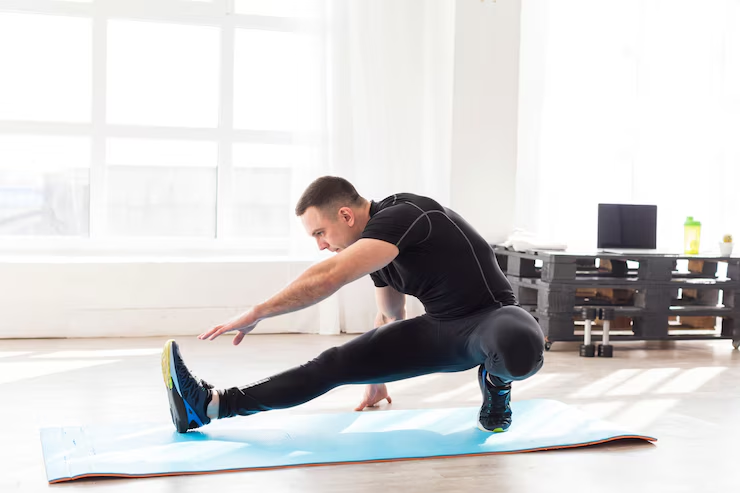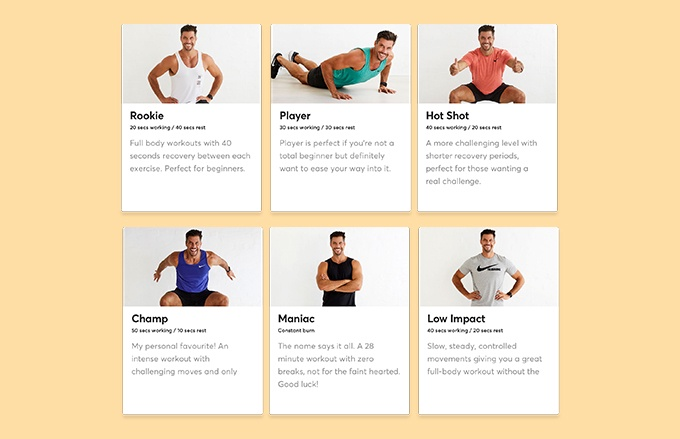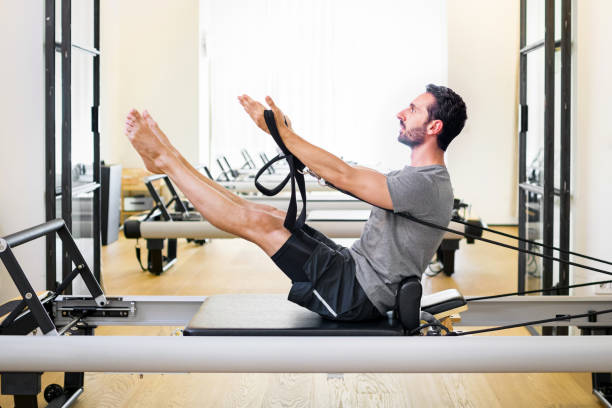Did you know that high-intensity interval training, or HIIT, can help you burn as much as 30% more calories than traditional workouts in the same amount of time? With just 15 to 30 minutes of HIIT workouts for fat burning, your metabolism stays elevated for hours afterward, turning your body into a fat-burning machine long after your workout ends.
But what exactly is HIIT, and why is it so effective for shedding pounds?
HIIT combines short bursts of maximum effort with brief recovery periods. This stop-and-go rhythm keeps your heart rate high and your energy output even higher. The beauty of it? You don’t need a gym membership or fancy gear. With just your body weight and a small space, you can knock out a powerful session right from your living room. That makes it perfect for busy schedules and tight budgets.
In this guide, you’ll learn how to integrate HIIT into your daily routine, how to do it safely at home, and how to start seeing results in as little as 15 minutes a day. If you’re ready to train smarter (not just harder)then you’re in the right place. Let’s dive in and get moving.
The Science Behind HIIT Workouts For Fat Burning
High-Intensity Interval Training (HIIT) has become one of the go-to workouts for fat loss, and for good reason. It’s not just a fitness trend; science backs up its effectiveness. The idea is simple: short bursts of intense effort followed by brief recovery breaks. This push-and-pause style pushes your body to its limits, sparking a chain reaction that keeps your metabolism buzzing long after you’ve finished your workout.
A big part of what makes HIIT so powerful is what we called Excess Post-Exercise Oxygen Consumption (EPOC), or the “afterburn effect.” When you go all-in during those high-intensity intervals, your body ends up in oxygen debt.
To bounce back, it has to work harder afterward, restoring oxygen levels, repairing muscles, and refueling. This recovery phase is where the magic happens, as your body keeps burning extra calories for hours, sometimes even up to a full day. One study in Medicine & Science in Sports & Exercise found that HIIT burns 25–30% more calories than steady-state cardio in the same amount of time.
HIIT is also great for improving insulin sensitivity, which means your body handles sugar better and is less likely to store it as fat. According to a study in the Journal of Obesity, HIIT helps reduce both the fat under your skin and the more dangerous fat around your organs, especially in people who start with higher body fat.
On top of that, HIIT boosts the release of fat-burning hormones like epinephrine and norepinephrine that trigger enzymes to help break down stored fat, so your body can use it as fuel.
A review in the Journal of Sports Science and Medicine found that HIIT raises these hormone levels more effectively than traditional cardio, leading to more fat burned over time.
And one of the best parts! HIIT saves time. While a regular cardio session might take 45 minutes or more, HIIT can give you equal or better results in just 15 to 30 minutes. So if you’ve got a packed schedule but still want to get in shape, HIIT is a smart, efficient way to make it happen.
7 Highly Effective HIIT Exercises for Fat Burning at Home
Here are seven powerful HIIT exercises that’ll help you burn fat, fire up your metabolism, and shape your body. Go all-out for 30–45 seconds for each move, rest for 15–20 seconds, and repeat the whole circuit 3–5 times for a serious sweat session.
1. Burpees
These are a full-body blast that get your heart pumping fast. They mix strength and cardio, making them a fat-burning favorite.
How to do it: Stand tall, drop into a squat, plant your hands, jump back into a plank, do a push-up, hop your feet back in, then explode into a jump.
Why they work: Boost endurance, work your core, and burn serious calories.
2. Mountain Climbers
Fast-paced and core-focused, these hit your abs, shoulders, and legs while keeping your heart rate up.
How to do it: From a plank, quickly drive your knees toward your chest one at a time, like you’re running in place. Keep your core tight and hips low.
Why they work: Build core strength, burn fat, and improve agility.
3. Jump Squats
This lower-body move builds power and torches calories.
How to do it: Drop into a squat, then spring up into a jump. Land softly and go straight into the next rep.
Why they work: Fire up your glutes, build explosive strength, and speed up fat loss.
4. High Knees
Like sprinting in place, these deliver a solid cardio punch.
How to do it: Run on the spot, bringing your knees up as high as possible and pumping your arms. Keep it fast and tight.
Why they work: Burn belly fat, improve coordination, and boost cardio fitness.
5. Push-Up to Plank Jack
This move hits your upper body and core while keeping your heart rate up.
How to do it: Start in a push-up position, lower down, then jump your feet out and in while holding a plank.
Why they work: Strengthens chest and shoulders while dialing up fat burn.
6. Bicycle Crunches
Core-heavy and heart-rate-lifting, these zero in on belly fat.
How to do it: Lie on your back, hands behind your head. Twist side to side, bringing one elbow to the opposite knee while extending the other leg. Move fast and stay controlled.
Why they work: Tone your abs and help burn deep belly fat.
7. Sprint Intervals
Short bursts of all-out running push your body to the limit.
How to do it: Sprint hard for 20–30 seconds, then walk or jog for 20 seconds. Repeat on a track, treadmill, or anywhere with space.
Why they work: Crank up your metabolism, torch fat, and boost endurance.
Things to Avoid in Your HIIT Exercises Journey
After diving into HIIT for fat burning, I’ve picked up a few lessons—some the hard way. It’s a powerful workout style, no doubt, but it’s easy to trip up if you’re not paying attention. If you want to get the most out of your workouts without burning out or getting hurt, here are the key mistakes I’ve learned to avoid:
Skipping the Warm-Up: One of the biggest missteps people make when diving into HIIT for fat loss is skipping the warm-up. Jumping straight into intense movements like sprints or burpees without preparing your body puts your muscles and joints at risk. Just five to ten minutes of dynamic stretching—think leg swings, arm circles, or light cardio can prime your system, enhance performance, and help you torch more calories during the actual workout.
Overdoing It Too Soon: HIIT is powerful, no doubt. But going all in, every single day, is a fast track to burnout or worse, injury. The body needs time to recover and adapt. Instead of grinding through daily sessions, aim for two to four HIIT workouts per week. This allows your muscles to rebuild, keeps your energy levels steady, and helps prevent fat-loss plateaus.
Ignoring Proper Form: Speed is great, but not if it comes at the expense of technique. Exercises like jump squats and mountain climbers lose their effectiveness and become downright risky when done with sloppy form. Focus on controlled, deliberate movements. You might move a little slower, but you’ll be activating the right muscles and staying safer in the long run.
Neglecting Rest Intervals: In an effort to push the limits, some people cut rest periods short to crank up intensity. But skipping those crucial 15- to 20-second breaks can actually backfire. Without proper rest, your form breaks down, your power drops, and your overall output suffers. Stick to the rest intervals—they’re there to help you go harder, not easier.
Relying Solely on HIIT: HIIT can do wonders for fat burning, but it shouldn’t be your only tool. Neglecting strength training or mobility work creates imbalances and limits overall progress. A well-rounded fitness routine blends HIIT with resistance training and flexibility work, helping you build lean muscle, stay mobile, and burn fat more efficiently.
Poor Nutrition Choices: You can’t out-train a poor diet—no matter how intense your HIIT sessions are. Relying on junk food or skipping meals undercuts your results. To truly support fat loss, your body needs quality fuel. That means whole foods, plenty of lean protein, healthy fats, and complex carbs to power your workouts and aid recovery.
Not Listening to the Body: HIIT demands a lot, and your body will speak up when it’s had enough. Ignoring fatigue, soreness, or signs of overtraining is a surefire way to stall progress or get hurt. Rest isn’t weakness—it’s part of the plan. Pay attention to how you feel, and don’t be afraid to take an extra day off when your body needs it. Longevity beats intensity every time.
I’ve found that avoiding these mistakes has transformed my HIIT exercises for fat burning into a sustainable, effective part of my fitness routine. By warming up, pacing workouts, maintaining proper form, respecting rest, balancing exercise types, eating well, and listening to the body, results come faster and last longer. Start your HIIT journey by dodging these common errors, and share your challenges or tips in the comments below to keep the conversation going!
Conclusion
You don’t need a gym to get seriously fit. High-intensity interval training (HIIT) at home is one of the most effective ways to burn fat, rev up your metabolism, and hit your fitness goals—all from your living room. With dynamic exercises like burpees, mountain climbers, and sprint intervals, you can get a powerful, full-body workout in a short amount of time.
To take your results even further, don’t skip the cool-down. A quick 5-minute recovery stretch helps ease muscle tension, supports flexibility, and reduces the risk of injury. And if you really want to get the most out of your sessions, try weaving in a bit of mindfulness.
Sources
The study of Medicine & Science in Sports & Exercise
Study from the Journal of Obesity
Review published in the Journal of Sports Science and Medicine







